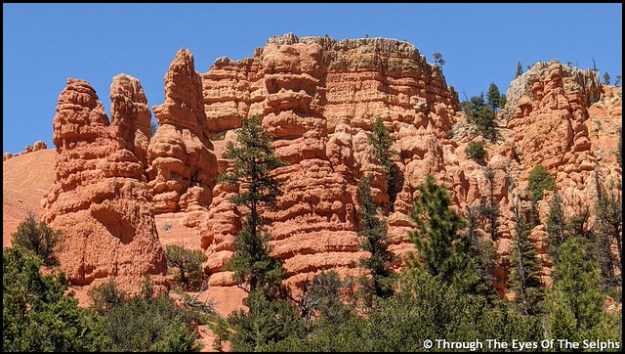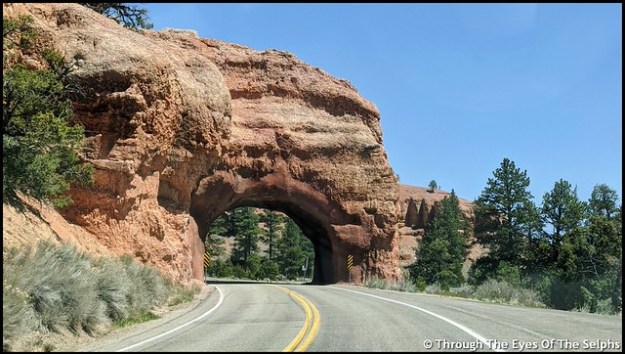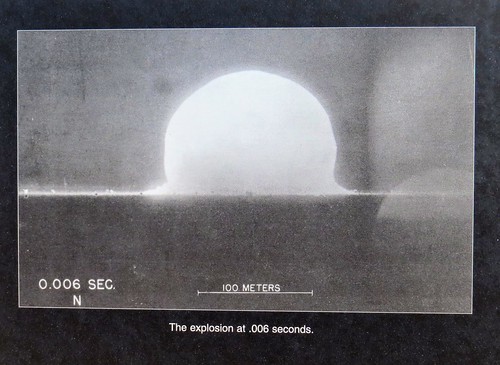We left Cedar City, Utah and traveled north on Interstate 15, still during the isolation rules of COVID-19 Pandemic. Since it was a short distance and we would be traveling over a steep pass, we decided I would follow behind in the car rather than towing. Look! There is Bill ahead of me with snow capped mountains in the distance. 
We arrived at our campground near the tiny town of Panguitch, Utah. Its claim to fame is Butch Cassidy was born just down the road. Butch Cassidy and his gang once had their photograph taken in Panguitch. We last camped here in late August, 2015. It is a no frills and very reasonably priced campground. We settled in for a two week stay. The first few days the temperatures were perfect during the day but too cold at night. One night the temperature got down to 21 degrees! We left the faucet dripping during the night and fortunately had no problems.
Since our last visit here in 2015 we had been anxious to visit Bryce Canyon NP again. Of the five national parks in Utah, this was our favorite. While many Utah national parks remained closed, because of the virus, we were very fortunate to have Bryce reopen with some restrictions. The Visitors Center, most restrooms and most trails were closed.
On Friday we made the 25 mile drive from our campground to Bryce Canyon. To get to Bryce Canyon we drove on Highway 12, The All American Road. We passed through Red Canyon, part of Dixie National Forest with its beautiful red sandstone and limestone formations and through two tunnels. 



The fee booth at the park entrance was not manned but they had maps and park information available.
Our goal today was to do the eighteen mile scenic drive and stop at the fourteen overlooks. Bryce Canyon isn’t really a canyon but a plateau with a series of horseshoe shaped amphitheaters carved in the edges of the eroding plateau. Bryce Canyon was settled by Mormon pioneers in the 1850’s and is named for Ebenezer Bryce, a Mormon settler who homesteaded the area in 1874. It became a national park in 1928.
Some viewpoints could be seen from the road while others required short walks, usually on paved walkways. The views were all amazing. Our favorite was the many hoodoos, which are towering rock formations sculptured over time by ice freezing and thawing, some as much as ten stories tall. There are approximately 200 days of freezing/thawing at Bryce Canyon each year. 
It was fun to let our imaginations run wild and imagine faces or figures in the formations. The Paiutes, original inhabitants of the area, believed that the rock figures were people turned to stone by angry gods. If you look closely you can also see fairy tale castle formations. Iron oxide gives red, yellow and brown tints to the limestone. 
One overlook was at 9,100 feet and it was very chilly. The number of tourists was low and it was nice to be able to drive through the park with very little traffic and no crowds at the overlooks. 
















The following Friday we went back to the park. This time there was a person at the fee booth with the window closed, not taking fees but handing out information through a slot. Unlike the previous Friday the Visitors Center was open with limited capacity but the theater was closed. We wanted to see the informative movie about the park we remembered from 2015, but since the theater was closed we didn’t stop. 





There was more traffic than the previous Friday. We passed by the prairie dog natural habitat area with signs warning of wildlife crossings. A prairie dog ran out in front of us and we stopped. He ran to the center of the two lane road, got confused and stopped. He then ran toward our car. We were unable to move until he moved to one side or the other. An impatient driver behind us honked his horn, and when we didn’t move, he zoomed past us on our right hand side. Not knowing where the prairie dog was we held our breath that he didn’t get hit. Usually when somebody does something irresponsible like this there are no police around to see it. But fortunately there was a Ranger headed in the opposite direction and saw what happened. He made a u-turn, turned on his lights and pulled the driver over. The Ranger looked pretty annoyed when he stepped out of his car. I never can understand why people come to places like national parks and are so impatient and in such a hurry. As for the prairie dog, he ran to the side of the road and lived happily ever after! 

Our main focus today was to walk the rim trail along the top of the canyon. When we were here five years ago we made the arduous hike on the Navajo Trail down into the canyon. On this day the Navajo Trail was closed indefinitely due to severe damage from winter weather. We talked with a Ranger who said they were going to have to call in a geologist for advice on how best to repair the popular trail. 





Our last days in Panguitch were very windy with gusts up to 45+ mph. We delayed leaving by one day because of the windy conditions since we would have to go back over the pass on the way to our next destination. Most of Utah is now open for business but physical distance and masks are required.
Next up: Provo, Utah


























































































































































